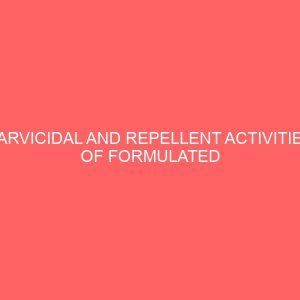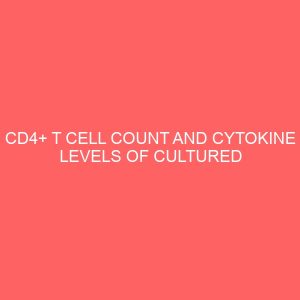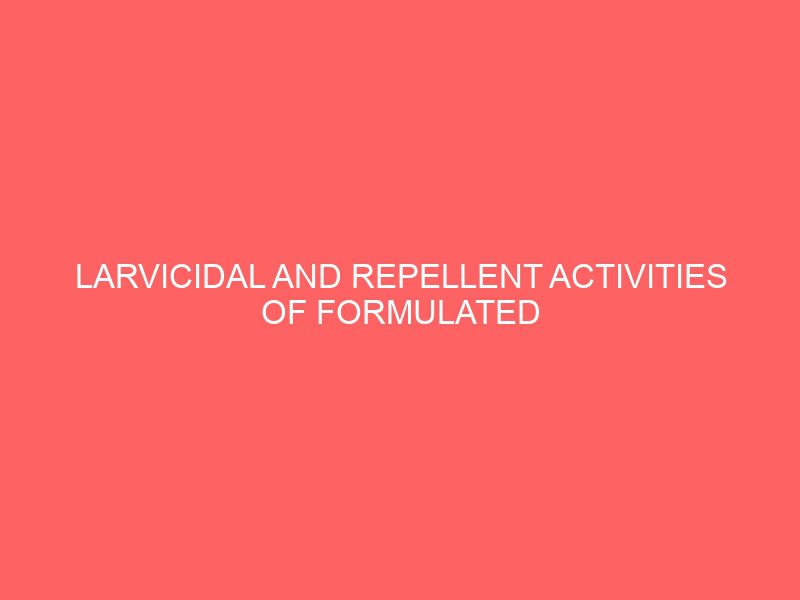Description
ABSTRACT
The larvicidal and repellent activities of formulated ointments from Lantana camara and Ocimum gratissimum leaves extracts were investigated against fourth instar larvae and adult of Aedes aegypti in individual and combined forms using the WHO protocol Plant materials were extracted by cold maceration method in aqueous methanol to obtain the methanol crude extract MCE and successively fractionated to obtain the nhexane fraction HF, chloroform fraction CF, ethyl acetate fraction EAF and the methanol fractionMF The results of the larvicidal investigation showed that in single forms of L camara, the LC50 values of solvent extracts/fractions were as follows: 062, 072, 096 ,220, and 336 g/L for ethyl acetate, nhexane, methanol crude, chloroform and methanol respectively For O gratissimum: the LC50 values of solvent extracts/fractions were 037, 060, 097, 160, and 323 g/L for nhexane, methanol crude, ethyl acetate, chloroform and methanol respectively The combination of the nhexane fraction from the two plants and nhexane O gratissimum combined with ethyl acetate L camara showed synergistic actions However, the ethyl acetate combination L camara O gratissimum and ethyl acetate from O gratissimum combined with nhexane from L camara exhibited antagonistic effects For the repellent test, all the formulations gave protection against mosquito bites without any allergic reaction to the test persons Maximum efficacy was observed in the MCE and EAF of O gratissimum in the single tests while the MCE and HFcombinations showed synergistic effect From the results it can be concluded the MCE, HF and EAF formulations of O gratissimum and L camara leaf are potential for controlling mosquitotransmitted diseases especially the ones transmitted by vector mosquito, Ae Aegypti Moreover, identifying the synergist compounds within mixtures may lead to the development of more effective biorepellents as well as the use of smaller amounts in the mixture to achieve satisfactory levels of efficacy in reducing the Ae aegypti population, especially in the areas where surveillance and supervisory mechanism are poor or insufficient
TABLE OF CONTENTS
Title Page i
Certification ii
Dedication iii
Acknowledgement iv
Table of Content v
List of Figures ix
List of Tables xi
List of Abbreviations xii
Abstract xiii
Chapter One: Introduction 1
11 Mosquito Biology 2
111 Lifecycle 3
112 Mosquito breeding sites 10
113 Arbovirus diseases 10
12 Mosquito control strategies 12
121 Control of mosquitoes which breed near human habitation 13
122 Control of mosquitoes over a large area 15
123 Mosquito control measures 16
1231 Chemical based control measures 16
12311 Insecticideimpregnated paint IIP 16
12312 Insecticide impregnated bednets IIB 17
1232 Nonochemical based control measures 17
12321 Surface active agents SAA 17
12322 Expanded polystyrene beads EPS 18
12323 Insect growth regulators IGRs 18
12324 Genetic manipulation SIT 19
1233 Biological control agents 19
12331 Bacterial agents 20
12332 Larvivorous fishes 20
12333 Protozoa 21
12334 Predatory mosquitoes 21
12335 Viruses 21
12336 Enteropathogenic Fungus 22
13 Natural products with mosquitocidal potentials 23
14 Larvicidal phytochemicals 23
141 Mechanisms of larvicides 24
15 Insect Repellent Activity of Medicinal Plants 25
16 Integrated Mosquito Management IMM 26
17 Joint action and toxicity of insecticides 26
18 Lantana Camara 28
181 Taxonomy 28
182 Plant description 29
183 Geographical distribution 31
184 Ethnopharmacology 31
185 Phytochemical composition 31
186 Pharmacological studies 32
19 Ocimum gratissimum L 32
191 Local names 32
192 Taxonomy 33
193 Botanic description 33
194 Phytochemical composition 35
195 Ethnopharmacology and Pharmacological studies 35
110 Statement of problem 36
111 Aims and objectives 38
CHAPTER TWO: EXPERIMENTAL 39
211 Instrumentation and glasswares 39
212 Solvents and reagents 39
213 Plant and animal materials 39
22 METHODS 40
221 Collection and preparation of plant materials 40
222 Extraction of plant materials 40
223 Preparation of plant extract concentration 40
23 Colonization of mosquito vectors 41
231 Source of eggs 41
232 Maintenance of Larvae 41
233 Maintenance of pupae and adults 41
24 Larvicidal Bioassay 42
241 Larval toxicity test of plant extracts and fractions 42
242 Determination of synergistic factors SF 43
25 Repellent Bioassay 43
251 Preparation of repellent product 43
252 Preparation of mosquitoes 46
253 Recruitment of Volunteers 46
254 Preparation of human volunteer for repellent test 46
255 Determination of landing time 46
256 Concentration Finding Experiments 47
257 Repellence test procedure 48
26 Adverse effect of the formulations on the skin of human volunteers 48
27 Statistical analysis 48
CHAPTER THREE: RESULTS AND DISCUSSION 50
31 Yields of the extracts and fractions 50
32 Larval toxicity tests 52
321 Larval toxicity tests of Lcamara 52
322 Larval toxicity tests of Ogratissimum 59
323 Larvicidal combination experiments 66
33 Statistical analysis of larval toxicity 69
331 Logprobit analysis of the single larval toxicity test 69
332 Logprodit analysis of the combination bioassay and synergistic factors 72
34 Repellence tests 74
341 The landing time 74
342 Repellence rate concentration Finding experiments 74
3421 Repellence rate of O gratissimum 74
3422 Repellence rate of L camara 76
3423 Repellence rate of Combination Bioassay 79
343 Comparison of the percentage protection time of extracts and fractions 81
3431 Percentage protection time of methanol crude extracts MCE 83
3432 Percentage protection time of hexane fractions HF 85
3433 Percentage Protection Time of Ethyl Accetate Fractions EAF 87
35 Adverse Effect of the Formulations on the Skin 89
CHAPTER FOUR: CONCLUSION AND RECOMMENDATION 90
References 92
Appendices 107








Reviews
There are no reviews yet.